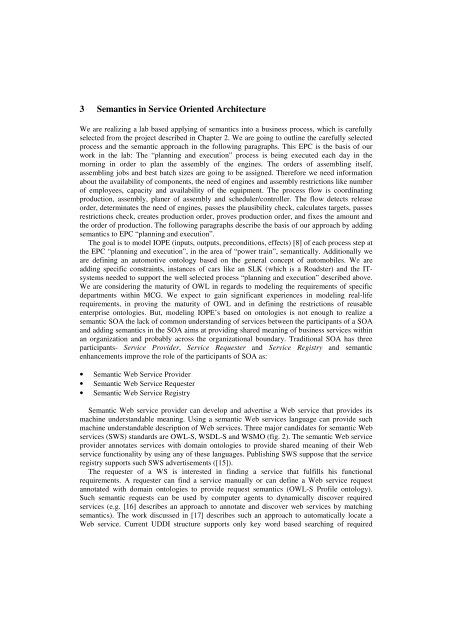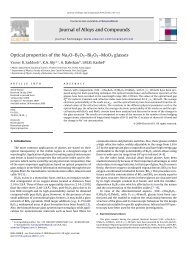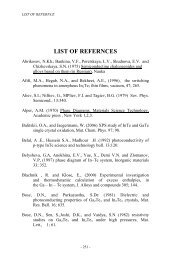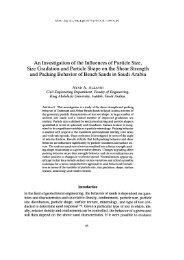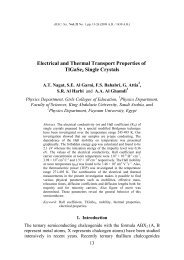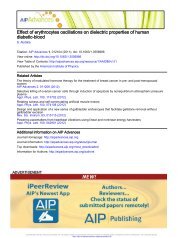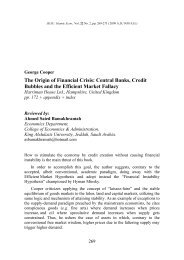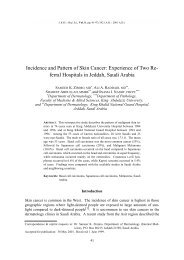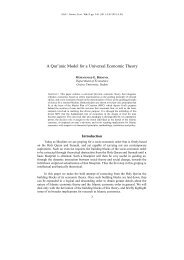Real-life SOA Experiences and an Approach Towards Semantic SOA
Real-life SOA Experiences and an Approach Towards Semantic SOA
Real-life SOA Experiences and an Approach Towards Semantic SOA
Create successful ePaper yourself
Turn your PDF publications into a flip-book with our unique Google optimized e-Paper software.
3 Sem<strong>an</strong>tics in Service Oriented Architecture<br />
We are realizing a lab based applying of sem<strong>an</strong>tics into a business process, which is carefully<br />
selected from the project described in Chapter 2. We are going to outline the carefully selected<br />
process <strong><strong>an</strong>d</strong> the sem<strong>an</strong>tic approach in the following paragraphs. This EPC is the basis of our<br />
work in the lab: The “pl<strong>an</strong>ning <strong><strong>an</strong>d</strong> execution” process is being executed each day in the<br />
morning in order to pl<strong>an</strong> the assembly of the engines. The orders of assembling itself,<br />
assembling jobs <strong><strong>an</strong>d</strong> best batch sizes are going to be assigned. Therefore we need information<br />
about the availability of components, the need of engines <strong><strong>an</strong>d</strong> assembly restrictions like number<br />
of employees, capacity <strong><strong>an</strong>d</strong> availability of the equipment. The process flow is coordinating<br />
production, assembly, pl<strong>an</strong>er of assembly <strong><strong>an</strong>d</strong> scheduler/controller. The flow detects release<br />
order, determinates the need of engines, passes the plausibility check, calculates targets, passes<br />
restrictions check, creates production order, proves production order, <strong><strong>an</strong>d</strong> fixes the amount <strong><strong>an</strong>d</strong><br />
the order of production. The following paragraphs describe the basis of our approach by adding<br />
sem<strong>an</strong>tics to EPC “pl<strong>an</strong>ning <strong><strong>an</strong>d</strong> execution”.<br />
The goal is to model IOPE (inputs, outputs, preconditions, effects) [8] of each process step at<br />
the EPC “pl<strong>an</strong>ning <strong><strong>an</strong>d</strong> execution”, in the area of “power train”, sem<strong>an</strong>tically. Additionally we<br />
are defining <strong>an</strong> automotive ontology based on the general concept of automobiles. We are<br />
adding specific constraints, inst<strong>an</strong>ces of cars like <strong>an</strong> SLK (which is a Roadster) <strong><strong>an</strong>d</strong> the ITsystems<br />
needed to support the well selected process “pl<strong>an</strong>ning <strong><strong>an</strong>d</strong> execution” described above.<br />
We are considering the maturity of OWL in regards to modeling the requirements of specific<br />
departments within MCG. We expect to gain signific<strong>an</strong>t experiences in modeling real-<strong>life</strong><br />
requirements, in proving the maturity of OWL <strong><strong>an</strong>d</strong> in defining the restrictions of reusable<br />
enterprise ontologies. But, modeling IOPE’s based on ontologies is not enough to realize a<br />
sem<strong>an</strong>tic <strong>SOA</strong> the lack of common underst<strong><strong>an</strong>d</strong>ing of services between the particip<strong>an</strong>ts of a <strong>SOA</strong><br />
<strong><strong>an</strong>d</strong> adding sem<strong>an</strong>tics in the <strong>SOA</strong> aims at providing shared me<strong>an</strong>ing of business services within<br />
<strong>an</strong> org<strong>an</strong>ization <strong><strong>an</strong>d</strong> probably across the org<strong>an</strong>izational boundary. Traditional <strong>SOA</strong> has three<br />
particip<strong>an</strong>ts- Service Provider, Service Requester <strong><strong>an</strong>d</strong> Service Registry <strong><strong>an</strong>d</strong> sem<strong>an</strong>tic<br />
enh<strong>an</strong>cements improve the role of the particip<strong>an</strong>ts of <strong>SOA</strong> as:<br />
• Sem<strong>an</strong>tic Web Service Provider<br />
• Sem<strong>an</strong>tic Web Service Requester<br />
• Sem<strong>an</strong>tic Web Service Registry<br />
Sem<strong>an</strong>tic Web service provider c<strong>an</strong> develop <strong><strong>an</strong>d</strong> advertise a Web service that provides its<br />
machine underst<strong><strong>an</strong>d</strong>able me<strong>an</strong>ing. Using a sem<strong>an</strong>tic Web services l<strong>an</strong>guage c<strong>an</strong> provide such<br />
machine underst<strong><strong>an</strong>d</strong>able description of Web services. Three major c<strong><strong>an</strong>d</strong>idates for sem<strong>an</strong>tic Web<br />
services (SWS) st<strong><strong>an</strong>d</strong>ards are OWL-S, WSDL-S <strong><strong>an</strong>d</strong> WSMO (fig. 2). The sem<strong>an</strong>tic Web service<br />
provider <strong>an</strong>notates services with domain ontologies to provide shared me<strong>an</strong>ing of their Web<br />
service functionality by using <strong>an</strong>y of these l<strong>an</strong>guages. Publishing SWS suppose that the service<br />
registry supports such SWS advertisements ([15]).<br />
The requester of a WS is interested in finding a service that fulfills his functional<br />
requirements. A requester c<strong>an</strong> find a service m<strong>an</strong>ually or c<strong>an</strong> define a Web service request<br />
<strong>an</strong>notated with domain ontologies to provide request sem<strong>an</strong>tics (OWL-S Profile ontology).<br />
Such sem<strong>an</strong>tic requests c<strong>an</strong> be used by computer agents to dynamically discover required<br />
services (e.g. [16] describes <strong>an</strong> approach to <strong>an</strong>notate <strong><strong>an</strong>d</strong> discover web services by matching<br />
sem<strong>an</strong>tics). The work discussed in [17] describes such <strong>an</strong> approach to automatically locate a<br />
Web service. Current UDDI structure supports only key word based searching of required


